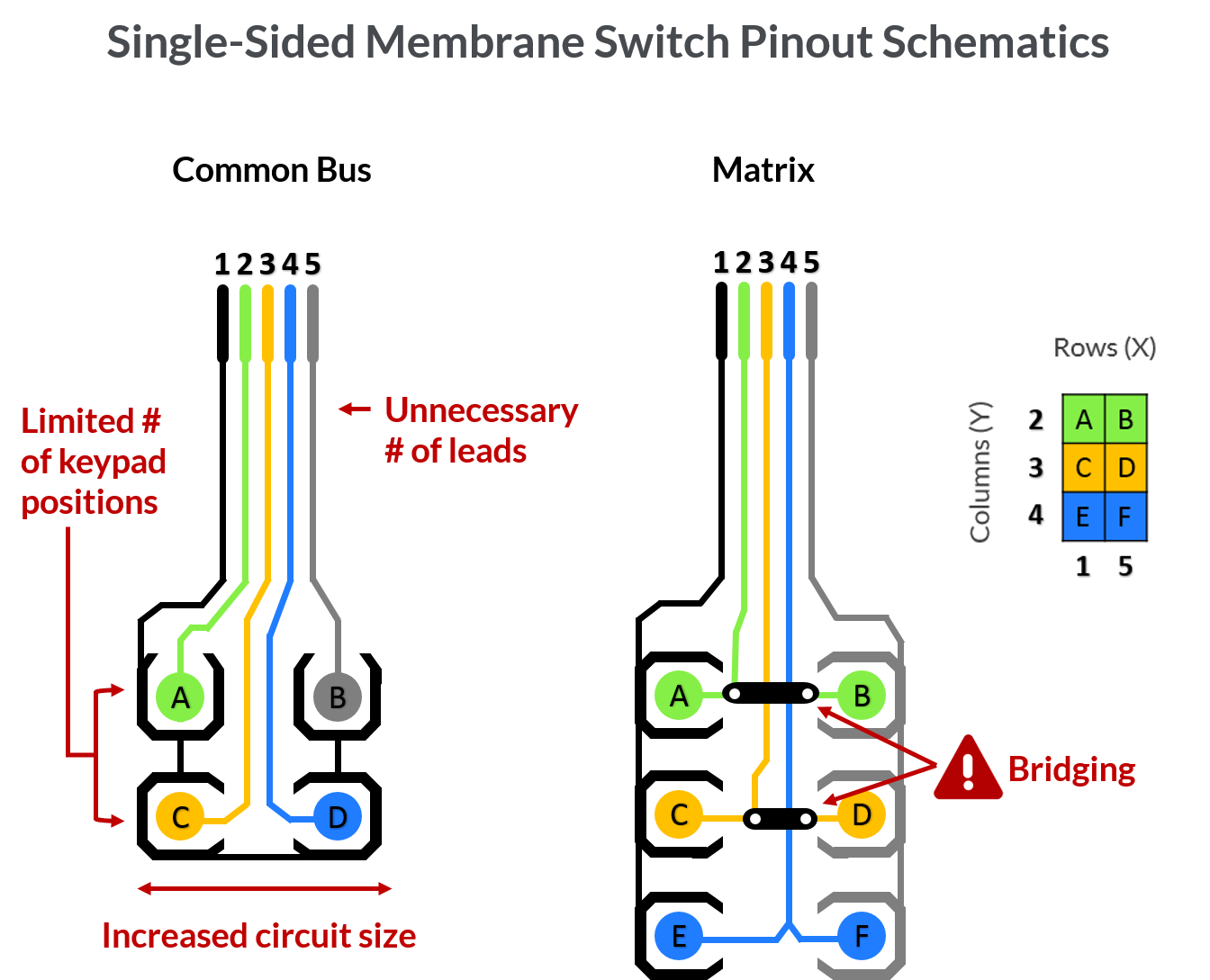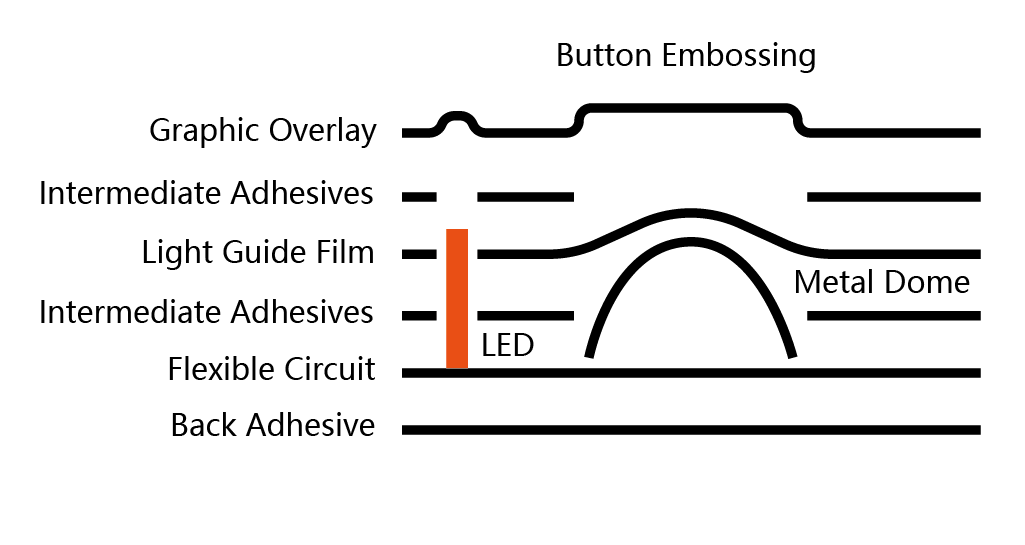The Production Process Behind Membrane Layer Switch: What You Required to Know
The manufacturing procedure behind membrane switches combines careful design, material selection, and quality assurance. It begins with recognizing the complexities of membrane layer button design and proceeds through different stages, including product choices and printing strategies. Each phase plays an essential function in making certain performance and durability. Nevertheless, the intricacies of layer building and the strenuous testing requirements might reveal insights that are not quickly obvious. What exists past these foundational aspects?
Recognizing Membrane Change Style
Although membrane layer buttons may appear basic at initial glance, their style includes intricate considerations that ensure capability and resilience. The design process begins with an extensive understanding of customer needs, consisting of the user interface's desired application and ecological factors. Ergonomics is an essential element, as the design has to promote ease of usage while ensuring that responsive responses fulfills individual expectations.Moreover, the layering of elements, such as graphic overlays, adhesive layers, and conductive traces, should be precisely engineered. membrane switch. This split arrangement not just affects the switch's responsiveness but likewise influences its long life. Interest is provided to the securing strategies utilized to safeguard against dampness and dirt, which might jeopardize performance. In addition, layout factors to consider expand to visual appeals, where color design and visual clarity boost individual experience. Ultimately, the layout of membrane switches equilibriums capability, user experience, and toughness, making certain that they satisfy the demands of numerous applications efficiently
Materials Utilized in Membrane Switch Over Manufacturing
When picking materials for membrane layer switch production, it is vital to contemplate both efficiency and resilience. The key materials consist of polyester and polycarbonate films, which supply flexibility and toughness. These films are commonly coated with sticky to guarantee appropriate bonding to substratums. Conductive inks, usually made up of silver or carbon, are vital for developing electrical links within the button, allowing for trusted operation.Additionally, a protective layer, such as a difficult layer, is frequently used to boost scratch resistance and durability. The selection of backing material, such as acrylic or foam, can substantially impact the switch's responsive feeling and overall individual experience. Various environmental aspects, consisting of temperature level and moisture, should direct material choice to assure peak efficiency in specific applications. Ultimately, the best mix of products adds to the membrane layer button's capability and lifespan, making informed choices vital for makers.
The Printing Refine: Creating Video and Text
The printing process in membrane button production plays a considerable duty in generating high-grade graphics and message. Numerous visuals layout strategies are used to assure aesthetic charm and performance, while cautious ink selection techniques are vital for toughness and efficiency. Comprehending these aspects is essential for achieving best results in membrane layer button style.
Graphic Style Techniques
Graphic design strategies play a crucial duty in the printing process of membrane buttons, as they define just how graphics and text will ultimately show up on the final item. Effective visuals style includes the strategic usage of fonts, designs, and colors to improve readability and aesthetic charm. Developers typically make use of vector graphics for scalability, making sure that images stay sharp at numerous sizes. In addition, attention to comparison and placement is important, as it affects user communication and visual high quality. The unification of branding elements, such as logos, have to be handled with like keep brand stability. On the whole, thoughtful graphic style strategies add considerably to the performance and attractiveness of membrane switches, influencing customer experience and product performance.
Ink Choice Approaches
Selecting the suitable ink is necessary for attaining the desired visual high quality and longevity in membrane switch production. Different ink types are used, consisting of solvent-based, water-based, and UV-curable inks. Each kind supplies distinct characteristics, such as bond, versatility, and resistance to environmental factors. Solvent-based inks are frequently favored for their sturdiness and vibrant colors, while water-based inks are more eco-friendly but might have constraints in attachment. UV-curable inks give quick treating and robust performance. Additionally, color matching techniques assure that the picked inks line up with style specs. Ultimately, the choice of ink have to take into consideration variables such as application technique, substrate compatibility, and end-use requirements to achieve premium cause membrane switch graphics and message.
Layer Building And Construction and Assembly

Product Selection Process
A careful choice of materials is necessary in the production procedure of membrane layer switches, as it directly influences functionality and sturdiness. The main products utilized consist of polyester, polycarbonate, and different conductive inks. Polyester is usually preferred for its superb resistance to chemicals and abrasion, making it ideal for harsh environments. Polycarbonate, on the other hand, offers exceptional clearness and effect resistance, which is useful for applications needing exposure and toughness. Conductive inks, usually composed of silver or carbon, are important for creating dependable electrical paths. In addition, the selection of sticky materials impacts the total honesty of the button - membrane switch. Assessing elements such as environmental direct exposure, responsive comments, and aesthetic needs overviews producers in selecting the very best products for their certain applications
Layer Adhesion Strategies
Sticking layers in membrane button building and construction is an important process that assures performance and longevity. Numerous bond techniques are used to protect perfect bonding in between layers, which usually include using adhesives, heat, and stress. Pressure-sensitive adhesives (PSAs) are frequently utilized for their convenience of application and immediate bonding capacities. Furthermore, thermal bonding techniques can be applied, where heat is utilized to activate glue residential properties, securing a solid bond. The choice of attachment method mainly depends on the products involved and the details application requirements of the membrane layer switch. Appropriate placement and uniform application of adhesives are crucial to avoid issues, securing the button operates successfully throughout its intended life expectancy.
Quality Assurance Steps
Assuring quality control during the layer construction and assembly of membrane layer buttons is vital for keeping performance and dependability. This procedure typically involves a number of essential steps, consisting of thorough evaluations at each phase of manufacturing. Manufacturers use innovative screening methods, such as peel tests and bond evaluations, to validate the integrity of layer bonds. Furthermore, visual examinations are performed to recognize any type of defects in printing or material disparities. Environmental conditions, such as temperature and humidity, are very carefully kept an eye on to assure excellent healing and attachment. Moreover, regular calibration of devices assists maintain specific manufacturing requirements. By applying these quality assurance procedures, makers can substantially lower the danger of product failure, guaranteeing that the last membrane changes fulfill the needed specs and customer expectations.
Examining and Top Quality Control Procedures

Technologies in Membrane Switch Modern Technology
As innovations in innovation remain to evolve, membrane layer switches are taking advantage of ingenious developments that boost their performance and user experience. One notable advancement is the integration of capacitive touch modern technology, which permits more receptive and user-friendly interface. This change not only enhances aesthetic appeals but likewise reduces mechanical damage, extending the life-span of the switches.Additionally, developments in visuals overlay materials have actually led to enhanced resilience and resistance to ecological factors such as moisture and UV light. These products now provide boosted clarity and illumination, more elevating the aesthetic appeal.Furthermore, the consolidation of wise technology is transforming membrane layer switches into interactive control board, enabling connectivity with IoT gadgets. This connection fosters a seamless individual experience, leading the way for applications in numerous sectors, from medical care to consumer electronic devices. Jointly, these developments setting membrane layer switches over as crucial elements in modern-day tool design.
Frequently Asked Concerns
For how long Does the Membrane Layer Switch Over Manufacturing Process Take?
The duration of the membrane switch manufacturing process can vary significantly. Aspects such as intricacy, products made use of, and manufacturing quantity impact timelines, with typical production ranging from a few days to several weeks for completion.
What Are the Common Applications for Membrane Switches?
Membrane layer buttons are commonly utilized in various sectors, consisting of vehicle controls, house devices, clinical gadgets, and consumer electronics (membrane switch). Their flexibility and sturdiness make them suitable for applications needing easy to use interfaces and dependable performance in varied settings
Can Membrane Layer Changes Be Personalized for Particular Needs?

What Is the Lifespan of a Common Membrane Layer Switch Over?
The lifespan of a common membrane switch differs, however usually, it varies from 1 to 5 million cycles. Factors such as usage, environment, and material high quality considerably affect longevity and total efficiency over time.

Are Membrane Changes Ecologically Friendly?
The ecological friendliness of membrane layer changes varies. Some materials used might not be recyclable, while others can be green. The general impact relies on making techniques and materials, demanding cautious consideration during option and disposal. The production process behind membrane switches over combines cautious style, material option, and high quality control. It begins with understanding the details of membrane layer switch layout and advances through numerous stages, including product options and printing techniques. When picking materials for membrane layer switch production, it is necessary to consider both performance and longevity. A cautious selection of products is important in the production process of membrane layer switches, as it straight influences capability and sturdiness. The choice of bond approach largely depends on the materials involved and the particular application demands of the membrane layer button.
Comments on “Why membrane switch is helping streamline industrial workflows”